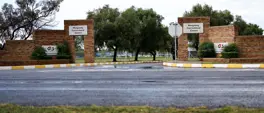MANDY WIENER: Government’s patchy crisis comms and the risk of lawlessness
Mandy Wiener
21 November 2024 | 4:09The South African government has much to learn from Tiger Brands and other corporate communication failures.
The Tiger Brands listeriosis saga has emerged as a case study of crisis communications — largely, how not to do it. Six years later, the matter is still tainting the brand, as a class action lawsuit persists. Tiger Brands failed to ‘stop the harm’ and immediately take ownership and apologise for the outbreak.
Increasingly, research shows that companies that confess to wrongdoing rather than fight it in the courts do better regarding reputation and their bottom lines. In' When Crisis Strikes', Francis Herd and Nicola Klein point out that share prices can be seen as a proxy for reputation. Tiger Brand’s share price fell considerably over the next year and a half, and the company lost billions.
Against this backdrop, I have been watching the government’s handling of the food contamination scandal and the management of the Stilfontein mine standoff.
The government’s crisis communication on both these issues has been hit and miss with some excellent calls and some confusing failures.
As more and more incidents occurred involving school children dying from contaminated food, communication from authorities lagged. In the days after the six children died in Naledi in Soweto after eating chips from a spaza shop, it was left to local officials to speak up. Initially, MMCs and the SAPS were attempting to establish facts, but the information was vague. As more incidents occurred, Gauteng Premier Panyaza Lesufi, who is generally savvy and incisive on PR, took control.
After several days of opaque communicating, Health Minister Dr Aaron Motsoeledi then came out to say that officials had identified ‘a chemical’ linked to the suspected cases of food contamination. He was proactive and sought out media opportunities and it was refreshing to finally be given information. But it was still somewhat vague.
The government’s response was described as ‘lethargic’ and pressure built. Once the Sowetan newspaper put the photographs of 22 dead children on its front page, the pressure mounted even further and urgent intervention was demanded. There were calls for a state of emergency and a national address from President Cyril Ramaphosa.
The President did address the nation on Friday night on the issue, but he did not have a great deal of new information to communicate. However, his team which includes a spokesperson who has vast experience in corporate PR crisis communications, would have seen the value in the President speaking on the topic and he did well to heed their advice.
I would argue that what would have been even more effective would have been an open press conference with the President, the Health Minister, the Police Minister and forensic and toxicology experts where journalists were allowed to ask questions and get a full understanding of what had occurred.
This would have gone a long way to clarifying misconceptions and confirming facts about foreign-owned spaza shops, the licensing and verification process of shop owners and the actual contamination of the food products. I still struggle to understand the lack of transparency around forensics and why so many incidents are occurring in a short period.
The government’s response to the Stilfontein illegal mining standoff has been similarly lethargic, aside from the strong communication of police Spokesperson Brigadier Athlenda Mathe. In the first days after the story broke about ‘thousands of miners trapped underground’ a local police spokesperson was handling media queries. But Mathe went to the mine and took responsibility for controlling the narrative. In resolute interviews, she insisted that ‘no one is trapped’ and clearly explained the police’s approach to Operation Vala Umgodi.
Following one of her interviews on The Midday Report this week, a listener messaged to say, “Her rebuttals are way sharper now. Her tone is firm but fair. Her points well-articulated.”
In the absence of clear communication from authorities, media fill the space with who is available and that would have been the community members at the mine in Stilfontein and the relatives of those illegal miners who are underground. Mathe’s communication has emboldened public criticism of illegal mining and support for the police’s actions.
However, the Minister of Mineral Resources Gwede Mantashe has been missing in action. This has likely been deliberately so and a tactical move as he has increasingly suggested that illegal mining is a police problem.
Christopher Rutledge, executive director of the Macua & Women Affected by Mining United in Action Advice Office, pointed out in Business Day that, “While some media have meekly asked why Mantashe has not been at the forefront of dealing with this matter, journalists have generally been far too comfortable and uncritical in following the government’s narrative. In the process, the media have allowed xenophobic sentiment to run rampant through the public discourse.”
By not taking a strong, clear stance on communicating both the food contamination and illegal mining issues, the government runs the risk of losing control of the narrative. That opens the space for outraged communities to continue to vociferously lay the blame on illegal foreigners and potential vigilante action could follow. Without authority and respect for the rule of law, lawlessness will grow.
The government should learn from Tiger Brands and other corporate communication failures in this country about how to consistently communicate in a crisis – be transparent, take ownership, show leadership, apologise and be empathetic.
Get the whole picture 💡
Take a look at the topic timeline for all related articles.
















